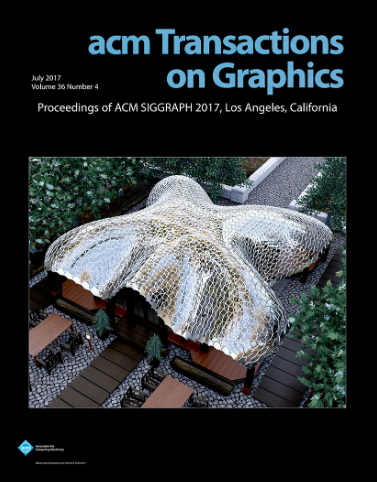B4M : B reaking Low-Rank Adapter for M aking Content-Style Customization
IF 9.5
1区 计算机科学
Q1 COMPUTER SCIENCE, SOFTWARE ENGINEERING
引用次数: 0
Abstract
Personalized generation paradigms empower designers to customize visual intellectual properties with the help of textual descriptions by adapting pre-trained text-to-image models on a few images. Recent studies focus on simultaneously customizing content and detailed visual style in images but often struggle with entangling the two. In this study, we reconsider the customization of content and style concepts from the perspective of parameter space construction. Unlike existing methods that utilize a shared parameter space for content and style learning, we propose a novel framework that separates the parameter space to facilitate individual learning of content and style by introducing “partly learnable projection” ( PLP ) matrices to separate the original adapters into divided sub-parameter spaces. A “ break-for-make ” customization learning pipeline based on PLP is proposed: we first break the original adapters into “up projection” and “down projection” for content and style concept under orthogonal prior and then make the entity parameter space by reconstructing the content and style PLPs matrices by using Riemannian precondition to adaptively balance content and style learning. Experiments on various styles, including textures, materials, and artistic style, show that our method outperforms state-of-the-art single/multiple concept learning pipelines regarding content-style-prompt alignment. Code is available at: https://github.com/ICTMCG/Break-for-make.B4M:用于制作内容风格定制的低级别适配器
个性化生成范式使设计者能够通过在少数图像上调整预先训练好的文本到图像模型,在文本描述的帮助下定制视觉知识属性。最近的研究侧重于同时定制图像的内容和详细的视觉风格,但往往难以将两者结合起来。在本研究中,我们从参数空间构建的角度重新考虑了内容和风格概念的定制。与现有的利用共享参数空间进行内容和风格学习的方法不同,我们提出了一种分离参数空间的新框架,通过引入 "部分可学习投影"(PLP)矩阵,将原始适配器分离成不同的子参数空间,从而促进内容和风格的个性化学习。本文提出了一种基于 "部分可学习投影"(PLP)的 "拆分-制作 "定制学习管道:首先在正交先验条件下将原始适配器拆分为内容和风格概念的 "向上投影 "和 "向下投影",然后通过使用黎曼先决条件重构内容和风格的 "部分可学习投影 "矩阵来制作实体参数空间,从而自适应地平衡内容和风格学习。在各种风格(包括纹理、材料和艺术风格)上的实验表明,在内容-风格-提示对齐方面,我们的方法优于最先进的单/多概念学习管道。代码见:https://github.com/ICTMCG/Break-for-make。
本文章由计算机程序翻译,如有差异,请以英文原文为准。
求助全文
约1分钟内获得全文
求助全文
来源期刊

ACM Transactions on Graphics
工程技术-计算机:软件工程
CiteScore
14.30
自引率
25.80%
发文量
193
审稿时长
12 months
期刊介绍:
ACM Transactions on Graphics (TOG) is a peer-reviewed scientific journal that aims to disseminate the latest findings of note in the field of computer graphics. It has been published since 1982 by the Association for Computing Machinery. Starting in 2003, all papers accepted for presentation at the annual SIGGRAPH conference are printed in a special summer issue of the journal.
 求助内容:
求助内容: 应助结果提醒方式:
应助结果提醒方式:


